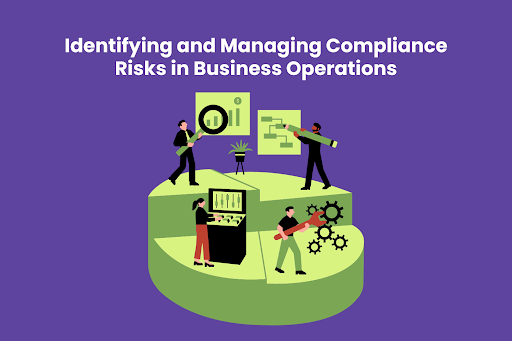
Creating a successful investment portfolio can be extremely beneficial for your financial future. However, it is important to remember that it doesn’t happen overnight. There are several key factors you need to consider when building your portfolio, such as deciding how much help you want, choosing the right account, and selecting investments based on your risk tolerance. In this article, we will discuss how to determine the best asset allocation for you and how to rebalance your investment portfolio as needed.
Decide how much help you want
The first step is to decide if you want to go at this alone or seek professional help. There are pros and cons to both, so it’s important to evaluate your comfort level with investments before making a decision. If you have the time and energy to research investments and monitor your portfolio, DIY investing may be a good option for you. However, if you prefer to have someone else manage your investments, hiring a financial advisor may be the better choice. If you go the DIY route, there are still a few things you’ll need to do to get started. As seen with folks at upmarket.co, when you’re ready to start creating a portfolio, you need to choose an account that works toward your goals.
If you want to be more hands-off, you can opt for a Robo-advisor that will automatically invest your money based on your goals and risk tolerance. If you want more control, you can open a brokerage account and choose your own investments. They also suggest that you choose your investments based on your risk tolerance. For example, if you’re a more risk-averse investor, you may want to consider investing in bonds or mutual funds. On the other hand, if you’re comfortable with taking on more risk, you may want to invest in stocks or ETFs.
Choose an account that works toward your goals
There are many different types of investment accounts, so it’s important to choose one that best suits your needs. For example, if you have a 401(k) through your employer, you may want to roll it over into an IRA when you leave your job. IRAs offer more flexibility and often have lower fees than 401(k)s. If you’re self-employed, you may want to set up a SEP IRA. These accounts allow you to contribute up to 25% of your income and offer tax-deferred growth.
You can also open a traditional brokerage account if you want to invest in stocks, bonds, and other securities. These accounts don’t offer the same tax benefits like retirement accounts, but they do give you more control over your investments. If you’re not sure which account is right for you, talk to a financial advisor or your tax professional. They can help you choose an account that meets your needs and offers the best tax advantages.
Choose your investments based on your risk tolerance
Once you’ve chosen an account, it’s time to start investing. The most important factor to consider when selecting your investments is your risk tolerance. This is the amount of risk you’re willing to take on in order to achieve your financial goals. For example, if you have a low-risk tolerance, you may want to invest in bonds or mutual funds. These investments are less volatile than stocks and offer a steadier return. If you have a high-risk tolerance, you may be more comfortable investing in stocks or ETFs. These investments tend to be more volatile, but they also offer the potential for higher returns.
It’s important to remember that all investments come with some risk. Even bonds can lose value if interest rates rise. The key is to find an investment that meets your needs and fits your risk tolerance. If you’re not sure where to start, there are many online tools and resources that can help you assess your risk tolerance and choose appropriate investments.
Determine the best asset allocation for you
Once you’ve selected your investments, it’s time to decide how to allocate your assets. This is the process of deciding what percentage of your portfolio should be in each investment. For example, if you have a portfolio of $100,000, you may want to allocate 60% to stocks and 40% to bonds. The right asset allocation for you will depend on your goals, risk tolerance, and time horizon.
If you’re young and have a long time horizon, you may be able to afford more risk. This means you can allocate a larger percentage of your portfolio to stocks. As you get older and approach retirement, you may want to reduce the amount of risk in your portfolio by investing more in bonds. There are many different asset allocation strategies, so it’s important to find one that meets your needs. You can talk to a financial advisor or use an online tool to help you determine the best asset allocation for you.
Rebalance your investment portfolio as needed
Once you’ve allocated your assets, it’s important to monitor your portfolio and rebalance it as needed. This means selling some of your investments that have increased in value and buying more of the ones that have lost value. This helps you maintain your desired asset allocation and manage risk. Rebalancing also gives you the opportunity to buy low and sell high, which can help you earn more money over time. You should rebalance your portfolio at least once a year, but you may need to do it more often if your investments are volatile. You can rebalance your portfolio yourself or hire a financial advisor to do it for you. Also, many online brokers offer automatic rebalancing services.
Conclusion
Creating a good investment portfolio is very important. It can help you reach your financial goals, reduce risk, and earn more money over time. There are many factors to consider when creating your portfolio, but the most important thing is to find an investment that meets your needs and fits your risk tolerance. Once you’ve selected your investments, it’s important to rebalance your portfolio as needed to maintain your desired asset allocation. By following these tips, you can create a good investment portfolio that will help you reach your financial goals.
I’m a professional blogger, marketer, and entrepreneur. I’m passionate about writing and focusing on the informative article about Fashion, Health, Beauty, Travel, and many more.
My contact mail: webtechhelp.org@gmail.com








